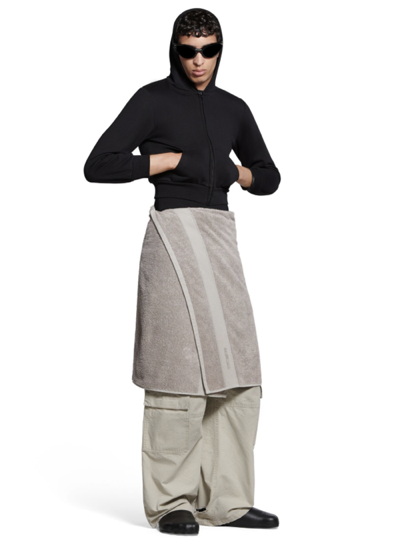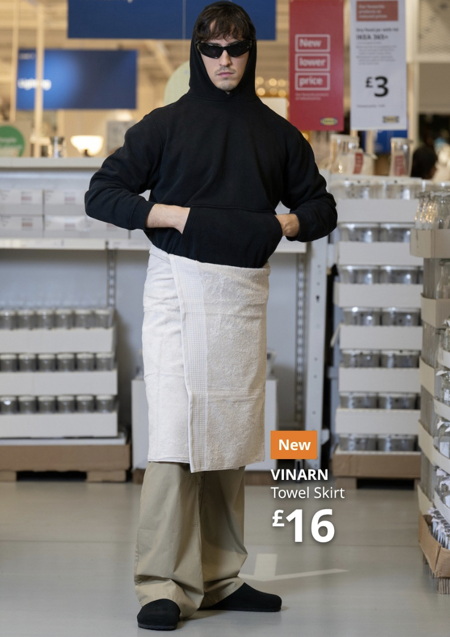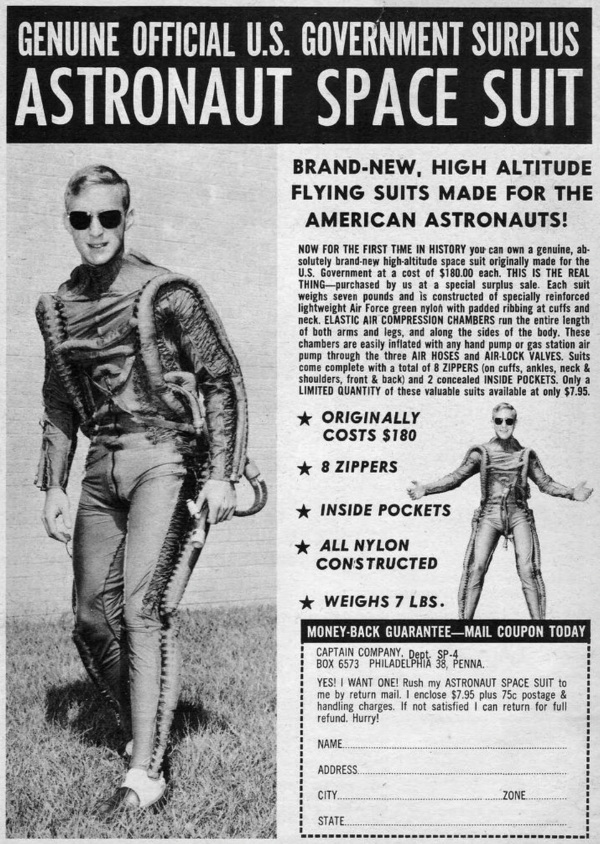Fashion
The model is not wearing a t-shirt and pants
Or is she?
A creation of University Arts London student Mimi Yoo. She explains:

via gastt Fashion
Posted By: Alex - Sun Aug 18, 2024 -
Comments (4)
Category: Fashion
International Bowling Fashion Show
This is definitely what I'll wear if I go bowling in the future.Also, I'm not sure what the "International Bowling Fashion Show" was. The details in the clips below are all that I could find.

(l) Ashley News - July 23, 1964; (r) Newark Advocate - July 11, 1964
Posted By: Alex - Sat Jul 27, 2024 -
Comments (2)
Category: Fashion, Sports, 1960s, Yesterday’s Tomorrows
Unlikely Reasons for Murder No. 19


Posted By: Paul - Wed Jul 10, 2024 -
Comments (1)
Category: Death, Fashion, Sports, 1990s
Pop-Topping
Back in the old days, cans were opened by pulling on an aluminum ring, or "pop top," that would come completely off the can. Now these have been replaced by stay-tabs.Most people threw away the pop-tops, but a few turned them into wearable art. The leader of this movement was Gonzalo Chavez, aka Pop-Top Terp. From Time magazine (Sep 21, 1970):
The first pop-top garments were almost as stiff as their medieval counterparts. But Chavez has made them much more supple. "They fit like a second skin," he claims. "As you wear them, they change shape a little and mold themselves to the contours of the body." Rings differ too. Budweiser's rings are light and flexible, Miller High Life's are "soft," and Pepsi's provide a heavier, stiffer garment.
In 1975, Pop-Top Terp published a book, Pop-Topping, that gave detailed instructions on how to make your own pop-top clothes. But since pop tops have now vanished, it's become a guide to a lost form of art. You can read it online at archive.org.





Posted By: Alex - Tue Jun 18, 2024 -
Comments (2)
Category: Fashion, Soda, Pop, Soft Drinks and other Non-Alcoholic Beverages, 1970s
Follies of the Madmen #598


Posted By: Paul - Mon Jun 10, 2024 -
Comments (3)
Category: Fashion, Oceans and Maritime Pursuits, Advertising, 1950s
TWA’s Foreign Accent Flights
In 1968, TWA introduced "foreign accent flights" on its domestic service. Travelers could choose to go on a French, British, Italian, or American-themed flight. The stewardesses were dressed in uniforms inspired by the respective countries. For instance, on the British flights the stewardesses wore an "English serving wench" outfit.
Time - Apr 24, 1968
More info from TWA Museum Guides Blog:
These "wear once and dispose" dresses were designed as wrap-arounds, secured with velcro fasteners. Hostesses typically carried a pair of scissors and tape to adjust the length. The promotion was short-lived. Logistical problems involving coordination of the dresses with the flight's theme developed and supply problems meant later uniforms had to be constructed with a lighter-weight paper, which was more prone to tearing. Some senior hostesses were reluctant to wear the dresses, including legendary flight attendant, Ida Staggers. Ms. Staggers, hired in 1936, was not pleased with this promotional role. Despite a large financial outlay for logistics and advertising, the program died quietly, never making it past 1968.

Hollywood Studio Magazine - July 1968

Sports Illustrated - Mar 25, 1968
Posted By: Alex - Tue Jun 04, 2024 -
Comments (3)
Category: Fashion, Air Travel and Airlines, 1960s
Smartphone-Shaped Sunglasses
Part of designer Sinead Gorey's "Phonecore" collection.More info: hmd.com

Posted By: Alex - Sun May 26, 2024 -
Comments (0)
Category: Fashion, Eyes and Vision
Buy bread in waxed paper
Buy bread in waxed paper and then lounge about with it while wearing a gown designed by Pauline Trigere.
Posted By: Alex - Wed Apr 24, 2024 -
Comments (0)
Category: Fashion, Food, Advertising, 1950s
Balenciaga Towel Skirt
Balenciaga recently debuted a "towel skirt" that retails for $925. It's been receiving quite a lot of attention.
Ikea spoofed if by coming out with a "VINARN towel skirt".

A writer for Vogue tried wearing it on her morning commute. She wrote, "It looked like I’d locked myself out of the house while doing the bins... Only the bins were across town."

Posted By: Alex - Tue Apr 23, 2024 -
Comments (3)
Category: Fashion, Overpriced Merchandise
Astronaut Space Suit

Posted By: Alex - Sat Apr 20, 2024 -
Comments (3)
Category: Fashion, Spaceflight, Astronautics, and Astronomy, 1960s

| Who We Are |
|---|
| Alex Boese Alex is the creator and curator of the Museum of Hoaxes. He's also the author of various weird, non-fiction, science-themed books such as Elephants on Acid and Psychedelic Apes. Paul Di Filippo Paul has been paid to put weird ideas into fictional form for over thirty years, in his career as a noted science fiction writer. He has recently begun blogging on many curious topics with three fellow writers at The Inferior 4+1. Contact Us |




